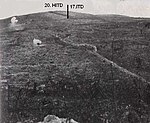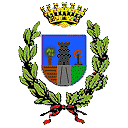Vipava (river)
Europe river stubsFriuli-Venezia Giulia geography stubsInternational rivers of EuropeItaly river stubsRivers of Italy ... and 4 more
Rivers of the Province of GoriziaRivers of the Slovene LittoralSlovenia geography stubsTributaries of the Soča

The Vipava (in Slovene) or Vipacco (in Italian) or Wipbach / Wippach (in German) is a river that flows through western Slovenia and north-eastern Italy. The river is 49 kilometres (30 mi) in length, of which 45 km in Slovenia. After entering Italy it joins the Isonzo/Soča in the Municipality of Savogna d'Isonzo. This is a rare river with a delta source, formed by nine main springs. The Battle of the Frigidus was fought near the river, which was named Frigidus ('cold') by the Romans. It has a pluvial-nival regime in its upper course and a pluvial regime in its lower course.
Excerpt from the Wikipedia article Vipava (river) (License: CC BY-SA 3.0, Authors, Images).Vipava (river)
SP8,
Geographical coordinates (GPS) Address Nearby Places Show on map
Geographical coordinates (GPS)
| Latitude | Longitude |
|---|---|
| N 45.899 ° | E 13.5533 ° |
Address
SP8
34078
Friuli-Venezia Giulia, Italy
Open on Google Maps









